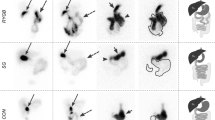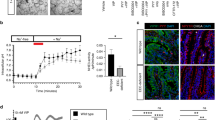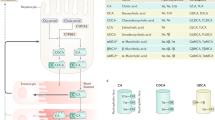Abstract
THERE are two well documented mechanisms of bile formation: active secretion of bile acids by hepatocytes and subsequent osmotic diffusion of water and electrolytes1,2, and secretion of an electrolyte solution by the biliary epithelium, chiefly in response to administration of secretin2,3. Several observations, however, suggest the possibility of an additional mechanism, especially in rodents, which have a very high bile flow. For example, bile flow remains high after bile salt depletion following bile duct cannulation in the rat4; and bile flow is high in the isolated perfused rat liver, with no entero-hepatic circulation of bile salts5. To explain these observations, inorganic ion secretion by the hepatocyte has been postulated6,9. Previous studies here gave results consistent-with a large hepatocytic bile salt independent fraction in the rabbit amounting to 60 µl./min/kg body weight, that is 60 per cent of the spontaneous bile flow in this animal7,8. To test the hypothesis that this fraction may result from active inorganic ion transport, we studied the effects on bile formation of known inhibitors of active sodium transport.
This is a preview of subscription content, access via your institution
Access options
Subscribe to this journal
Receive 51 print issues and online access
$199.00 per year
only $3.90 per issue
Buy this article
- Purchase on Springer Link
- Instant access to full article PDF
Prices may be subject to local taxes which are calculated during checkout
Similar content being viewed by others
References
Sperber, I., Pharmacol. Rev., 11, 109 (1959).
Preisig, R., Cooper, H. L., and Wheeler, H. O., J. Clin. Inves., 41, 1152 (1962).
Forker, E. L., J. Clin. Invest., 46, 1189 (1967).
Light, H. G., Witmer, C., and Vars, H., Amer. J. Physiol., 197, 1330 (1959).
Brauer, R. W., Pessotti, R. L., and Pizzolato, P., Proc. Soc. Exp. Biol. (NY), 78, 174 (1951).
Wheeler, H. O., Progress in Liver Diseases (edit. by Popper, H., and Schaffner, F.), 15 (Grune and Stratton, New York, 1965).
Erlinger, S., Dhumeaux, D., Benhamou, J. P., and Fauvert, R., Rev. Franç. Etud. Clin. Biol., 14, 144 (1969).
Erlinger, S., Dumont, M., Dhumeaux, D., and Benhamou, J.-P., Gastroenterology, 56, 1213 (1969).
Wheeler, H. O., Ross, E. D., and Bradley, S. E., Amer. J. Physiol., 214, 866 (1968).
Author information
Authors and Affiliations
Rights and permissions
About this article
Cite this article
ERLINGER, S., DHUMEAUX, D. & BENHAMOU, JP. Effect on Bile Formation of Inhibitors of Sodium Transport. Nature 223, 1276–1277 (1969). https://doi.org/10.1038/2231276a0
Received:
Issue Date:
DOI: https://doi.org/10.1038/2231276a0
This article is cited by
-
Choleretic effects of ouabain and ethacrynic acid in the isolated perfused rat liver
Naunyn-Schmiedeberg's Archives of Pharmacology (1972)
Comments
By submitting a comment you agree to abide by our Terms and Community Guidelines. If you find something abusive or that does not comply with our terms or guidelines please flag it as inappropriate.



